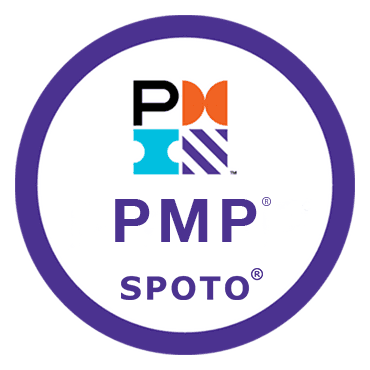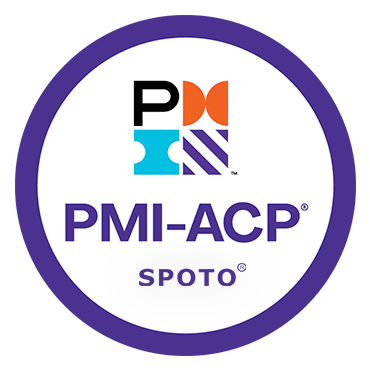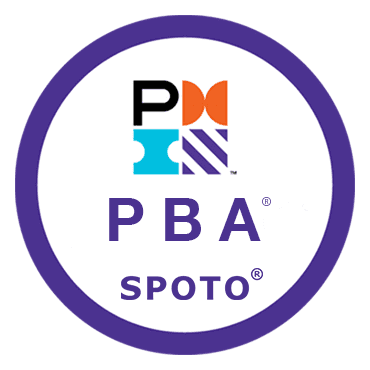The Project Management Professional (PMP)® certification is a globally recognized credential that signifies a high level of expertise and dedication within the project management field. For aspiring project managers, the culmination of months of study and preparation is the final exam. A critical decision on this journey is determining where to take this high-stakes test. This is not merely a question of logistics; it is a strategic choice that can significantly influence a candidate’s focus, comfort, and ultimate success on exam day. The Project Management Institute (PMI) partners with Pearson VUE, a leading provider of computer-based testing, to offer the PMP exam in two distinct formats: a proctored online exam and an in-person exam at a physical testing center.1 This report provides a comprehensive, data-driven guide to help candidates evaluate their options and select the one that best suits their needs.
The Project Management Professional (PMP) exam can be taken either securely online via Pearson VUE’s OnVUE platform or in-person at a global network of approved Pearson VUE test centers.1 Your choice depends on a crucial trade-off between the flexibility and convenience of online testing and the technical reliability and controlled environment of a physical test center.
This decision is more than a simple matter of convenience. It is an exercise in project risk assessment for your exam day. By evaluating the distinct advantages and disadvantages of each testing format, a candidate can confidently select the option that maximizes their performance and minimizes potential distractions and technical failures. This report breaks down everything a candidate needs to know to make an informed choice and plan their final approach to the exam.
The single most important factor in deciding where to take the PMP exam is understanding how a candidate’s personal preferences, logistical circumstances, and technical environment align with the distinct advantages and disadvantages of each testing option.
Table of Contents
Online vs. In-Person: What’s the Key Difference?
The fundamental distinction between online and in-person PMP testing lies in the allocation of responsibility and control. One format provides unparalleled freedom and convenience but places the entire burden of logistics on the candidate. The other provides a professionally managed environment and transfers the responsibility for all technical and environmental factors to the test center. This is a crucial consideration for a project manager accustomed to managing variables and mitigating risks.
The core difference lies in control and responsibility: online proctoring offers scheduling flexibility but requires the candidate to manage their environment and technical setup, whereas in-person testing provides a stable, distraction-free environment and transfers the responsibility for all technical and logistical factors to the test center.
The choice between online proctoring and a physical test center is a project management decision in itself. It is a strategic assessment of personal risks versus the benefits of a controlled environment. The two options present a classic project management trade-off: is the flexibility and convenience of taking the exam from a home or office environment worth the risk of a potential technical failure, an environmental interruption, or the psychological stress of strict online surveillance? Conversely, is the certainty of a stable, professionally managed test environment worth the travel and potential scheduling limitations?
A physical test center is a form of risk mitigation. The candidate effectively transfers all technical and environmental risks to the testing center, which provides a stable internet connection and an approved, pre-configured computer.3 This is a significant advantage, as the candidate does not have to worry about a power outage, an internet service interruption, or a system crash during a high-stakes exam.3 This allows them to focus their full cognitive resources solely on the exam questions. On the other hand, the online exam places all of this risk on the candidate. The proctor will likely discontinue the exam if technical issues arise, and the candidate will be responsible for any associated rescheduling costs.1 This risk profile is a central factor for any candidate to consider when making their decision. The following table provides a detailed comparison across multiple dimensions to aid in this risk analysis.
| Feature | Online Proctoring (OnVUE) | In-Person Test Center |
| Scheduling | Highly flexible, with appointments available 24/7.3 This allows candidates to schedule their exam at a time that works best for their personal rhythm, including evenings and weekends.5 Appointments can be found on-demand and rescheduled up to 48 hours in advance for a fee.5 | Scheduling depends on the availability of test centers, which may have limited slots, especially in certain regions.3 You can search for and compare appointment availability at up to three test centers at a time.8 |
| Environment | The candidate is responsible for providing a private, quiet, and distraction-free space.1 The room must be free from clutter, electronics, and paper materials.1 Public spaces like offices or libraries, as well as bathrooms, are strictly prohibited.1 | A professional, professionally monitored environment is provided with individual workstations designed to minimize distractions.6 The setup is standardized and predictable.3 However, external factors such as room temperature cannot be controlled.10 |
| Technical Requirements | The candidate is fully responsible for meeting and testing the technical requirements.1 This includes having a compatible operating system (e.g., Windows 10, macOS 10.13 or above), at least 4GB of RAM, and a stable internet connection of at least 3 Mbps.1 A system test must be run in advance to ensure the computer, webcam, and microphone are functional.1 | All technical aspects are handled by the test center. A stable internet connection and an approved computer are guaranteed, eliminating the candidate’s need to worry about technical issues on exam day.3 |
| Security & Proctoring | Strict online monitoring is conducted via webcam and screen sharing.3 Proctors and AI tools monitor hand placement, eye movement, and behavior throughout the exam.4 A proctor can communicate via chat or mic to address any perceived security violations, which can be distracting.3 Any violation, such as looking away from the screen or speaking aloud, can result in exam termination.3 | Security protocols are well-established and intuitive.3 Candidates are monitored via security cameras and an on-site proctor.9 The proctor can provide direct, in-person assistance for any issues or concerns.4 |
| Notes & Aids | An online whiteboard is provided for note-taking.3 No physical scratch paper or writing materials are permitted.1 An on-screen calculator is available for computations.9 | Scratch paper and writing materials are provided by the test center for note-taking and calculations.3 An on-screen calculator is also available.9 |
| Breaks | Two optional 10-minute breaks are provided after specific exam sections, during which the exam clock stops.10 Any other breaks will not stop the exam clock.10 Candidates must remain in view of the webcam and cannot leave the testing space, except for the permitted breaks.1 | The exam includes two optional 10-minute breaks, but unscheduled breaks are also possible, though the exam clock will continue to run.9 Candidates can access their personal belongings from a locker during breaks to retrieve items like snacks and drinks.9 |
| Logistical Responsibility | All logistical risk (e.g., internet outages, power failures, personal interruptions from family or pets) is the responsibility of the candidate.3 Unforeseen interruptions can result in exam termination, and the candidate may need to request a retake.3 | The test center provides a stable and consistent environment, transferring the risk of technical failure or environmental disturbance from the candidate.3 |
The choice between online and in-person testing is a project management decision in itself, requiring a thorough risk analysis of a candidate’s personal environment, technical setup, and testing comfort zone.
Is Taking the PMP Exam Online Right for You?
The online PMP exam, administered by Pearson VUE’s OnVUE platform, offers an attractive level of flexibility and convenience. It allows candidates to take the test from the comfort of their home or office, eliminating the need for travel and providing round-the-clock appointment availability.3 While this convenience is a significant advantage, it comes with the responsibility of managing a series of stringent technical and environmental requirements. Candidates considering this option must first perform a candid self-assessment to ensure their environment is capable of supporting the exam without interruption or failure.
The online PMP exam is an excellent option for those who have a reliable computer and internet connection, a truly private and quiet space, and the discipline to adhere to strict security protocols from the comfort of their home or office.
A successful online PMP exam depends on a candidate’s ability to become their own test center. This requires significantly more advanced preparation than simply showing up at a facility.4 Before scheduling, a candidate must ensure their system meets the technical requirements, which include a compatible operating system, sufficient RAM, a working webcam and microphone, and a stable internet connection.1 Pearson VUE strongly recommends running a system test in advance to check for technical compatibility and a live video-streaming connection.1 The use of a personal computer is also recommended over a work computer, as corporate firewalls or VPNs can interfere with the testing software.1
On exam day, the check-in process requires a candidate to log in up to 30 minutes before their scheduled appointment time.1 They will be prompted to download and run the OnVUE software and will then undergo a detailed self-check-in process. This involves taking photos of their government-issued ID, their face, and a full 360-degree scan of their testing environment to prove it is free of unauthorized materials or people.1 After this, a candidate is placed in a queue to wait for a live proctor to review their setup.1
The physical environment itself must adhere to strict rules.1 A candidate must be alone in a private, enclosed space with a tidy desk free of clutter. Visible notes on walls, such as sticky notes or whiteboards, may need to be removed or covered, as they can be inspected by the proctor.1 Personal items, including watches, sunglasses, and headphones, are prohibited.1 A beverage and chewing gum are permitted, but food is not.1
Once the exam begins, the proctor and AI tools provide continuous surveillance. This level of scrutiny can be stressful for some, as it monitors not just the candidate’s answers but also their behavior, including eye movement and hand placement.4 A candidate is not permitted to speak aloud, use scratch paper, or look away from the screen.3 Even placing a hand or finger on one’s face is prohibited.3 A proctor will communicate via chat or mic to alert a candidate if they violate any rules, which can cause a distraction and potentially lead to the termination of the exam.3
The convenience of the online PMP exam is a double-edged sword. While it removes the stress of travel, it introduces a new layer of logistical and psychological stress related to managing the technical setup, preventing interruptions, and adhering to intrusive security protocols. This means that in addition to the pressure of the exam content itself, a candidate must also manage the risk of a technical failure or an environmental disturbance. This makes online testing a high-risk, high-reward option, as a single, unforeseen issue could result in the termination of the exam.3
The online PMP exam provides unparalleled flexibility but transfers the responsibility for a flawless technical and environmental setup directly to the candidate, making it a high-risk, high-reward option.
Choosing a PMP Test Center: Why Go In-Person?
For decades, the PMP exam was only available in person, and this traditional method continues to offer a compelling value proposition.3 While it lacks the ultimate convenience of the online exam, its core appeal is a minimized risk profile and a standardized, predictable experience. The in-person exam is a project manager’s opportunity to outsource the management of all non-exam-related constraints, allowing them to focus exclusively on demonstrating their knowledge and skills.
A physical test center is the ideal choice for candidates who prioritize a stable, distraction-free environment, are concerned about technical issues at home, and prefer the proven, standardized protocols of a traditional testing facility.
The in-person experience is designed to remove a candidate’s logistical concerns and provide a singular focus on the exam. The process is well-documented and straightforward.3 Candidates are advised to arrive at least 30 minutes before their scheduled appointment to allow ample time for check-in procedures.9 This process involves presenting a valid, government-issued photo ID, having pockets emptied, and undergoing a self-pat-down to ensure no unauthorized items are carried into the testing room.9 All personal belongings, including bags, electronics, and study materials, are required to be stored in a secure locker provided by the test center.9
Once inside, candidates are assigned a secure workstation with a designated computer and privacy measures to minimize distractions.9 The test center provides a stable, approved computer and a reliable internet connection, which eliminates the anxiety of a technical failure during the exam.3 Unlike the online exam, candidates are provided with physical scratch paper and writing materials for note-taking and calculations, which must be returned to the staff at the conclusion of the test.3
The in-person environment is professionally monitored via security cameras and an on-site proctor, who is readily accessible to assist with any concerns.4 This approach offers a different dynamic than online proctoring, as the proctors can allow some freedom in movement and behavior.4 Candidates are also permitted to take scheduled and unscheduled breaks, during which they can access their locker for snacks or use the restroom.9
However, the in-person option is not without its trade-offs. The primary drawback is the need to travel to and from the testing center, which can be inconvenient, especially if the nearest center is far from home.3 The availability of seats and appointment times can also be limited, and the candidate cannot control environmental factors like room temperature, which can be either “freezing or burning hot”.6 Despite these drawbacks, many project professionals recommend in-person testing because of the reliability and predictability it offers for such a critical certification exam.4
A physical test center minimizes the risk of technical failure and environmental distractions, allowing candidates to focus solely on the exam content, but requires logistical planning and may offer less scheduling flexibility.
How Do You Schedule Your PMP Exam?
Once a candidate has completed their preparation and is ready to commit to an exam date, the scheduling process becomes a critical final step. This phase is part of a larger, multi-stage project in itself, with clear dependencies that must be met before proceeding.13 A candidate must have their application accepted and the exam fee paid before they can book their appointment. Knowing the precise, step-by-step procedure is essential to ensure a smooth, stress-free experience.
After a candidate’s PMI application is accepted and the exam fee is paid, they can schedule their exam by logging into their PMI.org account, navigating to their application status, and following the prompts to the Pearson VUE scheduling portal to book their desired date, time, and test location.
The scheduling process is a critical final step that requires a candidate to have their PMI Eligibility ID ready and to carefully consider appointment availability and potential fees for changes.
Here is a detailed, step-by-step guide to scheduling the PMP exam:
- Application Approval and Payment: The first and most critical prerequisite is to have a submitted PMP application accepted by PMI. A candidate must meet all eligibility requirements, including documenting their professional experience and project management education.13 Once the application is approved, the candidate will receive an electronic notification requesting payment of the exam fee.13 The fee is $405 for PMI members and $555 for non-members, and it must be paid before a candidate can proceed to scheduling.16
- Receive Your PMI Eligibility ID: After payment is received, PMI will issue a unique PMI Eligibility ID. This ID is essential for the scheduling process and must be retained by the candidate.5
- Navigate to the Scheduling Portal: A candidate can begin the scheduling process by logging into their PMI.org account. From the dashboard, they should navigate to the “Review Application Status” section under their myPMI profile.7 From there, they will find a link to “Schedule Exam,” which will securely redirect them to the Pearson VUE website.5
- Choose Your Exam Type: On the Pearson VUE portal, a candidate must select their preferred testing format: either a “Center-Based Test” (CBT) or an “Online Proctored Test”.5 The choice made here will dictate the remaining steps of the process.
- Select Date and Location: If a candidate chooses the in-person option, they will be prompted to search for a local test center and select an available date and time.5 If they opt for the online exam, they will simply select a time slot from the 24/7 availability.5 It is recommended to schedule the exam well in advance of the desired test date.7
- Confirm and Finalize: After selecting the exam details, a candidate will be asked to review their appointment and complete the checkout process. Once submitted, Pearson VUE will send a confirmation email with all the appointment details and important information for exam day.5 It is important to note that a fee of $70 will be charged if a candidate needs to reschedule or cancel their exam within 30 days of the scheduled appointment.5
Conclusion
The decision of where to take the PMP exam is a deeply personal one, requiring a candid self-evaluation of a candidate’s circumstances and preferences. It is, at its core, a project management decision to assess and mitigate risks. The online proctored exam offers unparalleled flexibility and convenience, but places the full responsibility for a stable technical environment and a distraction-free space on the candidate. This makes it a high-risk, high-reward option for those who are confident in their setup and comfortable with constant surveillance. In contrast, the in-person test center offers a time-tested, stable, and predictable environment. By choosing this option, a candidate transfers all the logistical and technical risks to a professional facility, allowing them to focus their energy and attention entirely on the exam content. Both options are valid and secure paths to certification, and both are administered by the official testing partner, Pearson VUE. The most successful approach is to choose the option that best aligns with one’s personal risk tolerance and allows them to perform at their best.
External links recommendations
- PMI.org: The official website for the Project Management Institute, which is the ultimate authority on the PMP certification and where a candidate must create an account and apply for the exam.13
- PearsonVUE.com: The official testing partner for PMI, where candidates can find a test center, run a system test, and schedule their exam.1
- PMI’s PMP Handbook: An essential resource detailing all exam policies, eligibility requirements, and the application process.15
- OnVUE Technical Requirements: The official guide for system requirements and environmental rules for the online proctored exam.1
引用的著作
- Project Management Institute (PMI) OnVUE exam information …, https://www.pearsonvue.com/us/en/pmi/onvue.html
- PMI – Project Management Institute certification testing with Pearson …, https://www.pearsonvue.com/us/en/pmi.html
- PMP Exam: Online vs Test Center – Yassine Tounsi, https://yassinetounsi.com/pmp-exam-online-vs-test-center/
- How to Decide Where to Take the PMP® Exam – PMI, https://www.pmi.org/blog/online-vs-in-person-pmp-testing
- PMP Exam Schedule for 2025: Check PMP Exam Date – KnowledgeHut, https://www.knowledgehut.com/blog/project-management/pmp-exam-schedule
- How to Decide Where to Take the PMP Exam – ShriLearning, https://shrilearning.com/where-to-take-the-pmp-exam/
- Exam Scheduling Instructions for Pearson VUE Testing – PMI, https://www.pmi.org/update-center/-/media/pmi/documents/public/pdf/certifications/exam-schedule-pearson-vue.pdf
- Exam Resources and Test Preparation – Pearson VUE, https://www.pearsonvue.com/us/en/test-takers/resources.html
- PMP Exam: 3 Key Tips For Onsite Success At Pearson VUE – rosemet, https://www.rosemet.com/pmp-exam/
- In Person Test or Online? : r/pmp – Reddit, https://www.reddit.com/r/pmp/comments/1cgycne/in_person_test_or_online/
- Messages on System Requirements for Online PMP Test – ProjectManagement.com, https://www.projectmanagement.com/discussion-topic/212503/system-requirements-for-online-pmp-test
- Pearson VUE Candidate Rules Agreement, https://www.pearsonvue.com/content/dam/VUE/vue/global/documents/candidate-rules/candidate-rules-agreement.pdf
- Project Management Professional (PMP)® Certification | PMI, https://www.pmi.org/certifications/project-management-pmp
- How To Apply For The PMP® Exam – PM-ProLearn, 2025, https://www.pm-prolearn.com/certifications/pmp-project-management-professional/how-to-apply-for-pmp-exam
- Simple Steps to Earning the PMP Certification – CertWise Project Management Training, https://certwise.com/step-by-step/
- PMP Certification Training Classroom and Live Online Courses in Portland, ME, United States – iCert Global, https://www.icertglobal.com/course/PMP-Certification-Training-Portland-ME/Classroom/5/1451
- Pearson VUE: Certification Exams & Testing, https://www.pearsonvue.com/









Comments